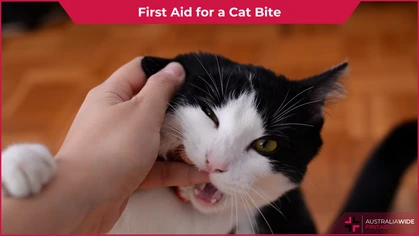First Aid for the Black Whip Snake

Bites and Stings

The Black whip snake is common throughout south east Queensland, including Brisbane. Large individuals are considered potentially dangerous, as their venom can cause a host of moderate to severe symptoms. (Credit: Matt Clancy/Wikimedia Commons)
Common throughout south east Queensland and Australia's northern coast, the Black whip snake (Demansia vestigiata) is a venomous snake that can cause dangerous symptoms, especially in children. Continue reading for more information about the Black whip snake (otherwise known as the Lesser black whip snake) and what to do if you encounter one. We also cover snake bite first aid in our general and childcare first aid courses. We have training locations in Brisbane and in every other state, capital city, and major town throughout Australia.Appearance
- Slender body that can range in colour from rich dark brown to dark grey, though often with a reddish-brown flush towards the tapering tail
- There are dark and light markings on individual scales, which gives the body a pattern of black and white flecks, respectively
- Narrow, pale edges around their eyes
- Midbody scales at 15 rows (the number of scales you can count at the widest part of the snake's body when it is 'sitting' on the ground)
- Average length of 1.2 metres
Distribution
The Black whip snake can be found in a variety of habitats throughout south east Queensland, including:- Open woodlands
- Dry forests
- Coastal heaths
Danger
Large Black whip snakes are considered potentially dangerous to humans, especially children, as their venom can cause localised pain, swelling, and other symptoms ranging from moderate to severe. If you sustain a bite, apply snake bite first aid and seek medical attention. It is important to remember, snakes will never go out of their way to attack you - they will generally only bite people when threatened or provoked. As such, if you encounter a snake, do not attempt to approach, capture, or kill it. If you need a snake relocated from your home, contact a snake catcher instead.Final thoughts
To learn more about treating and preventing snake bites, enrol in our general or childcare first aid course. We have training locations in Brisbane and throughout every state, capital city, and major town in Australia. Head to our website to enrol in a first aid course near you today.
Originally published at
https://www.australiawidefirstaid.com.au/resources/black-whip-snake
as part of the Australia Wide First Aid Articles Library









